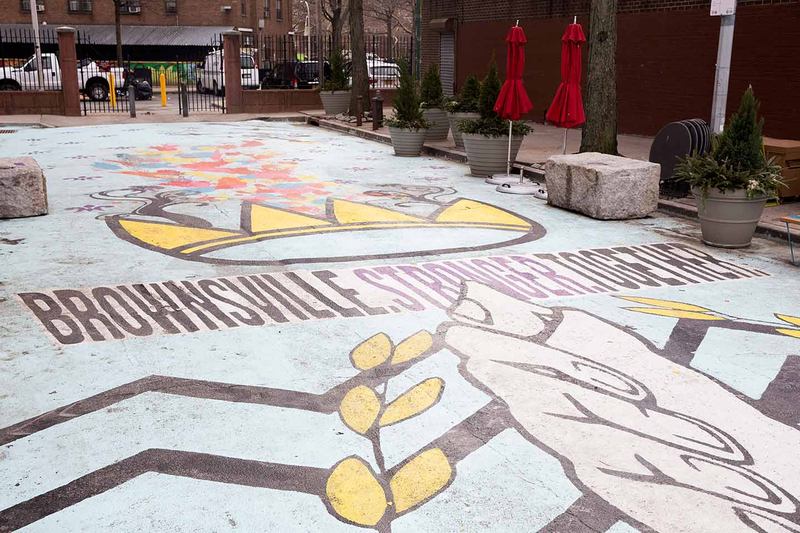
The New York City police department, along with the mayor, has been hammering the idea that the city is the safest it's ever been, and certainly the safest big city in the nation. But that feeling of safety is not a reality to all people in all neighborhoods, Police Commissioner James O'Neill said last month, when he pledged to focus on six precincts with violent crime rates at least twice as high as the city's overall.
The plan, O'Neill said, starts with small meetings in those neighborhoods that bring together local residents and community groups with police and representatives from city agencies.
"No one knows a precinct or a block or a neighborhood better than the people that live there and work there," said James O'Neill, the police commissioner, in an interview a day after the NYPD held its first meeting last week in Brownsville, part of the 73rd precinct.
The other precincts where the NYPD is aiming its focus cover neighborhoods in the South Bronx, East Harlem and East New York, Brooklyn. Police officials are holding meetings in these areas over the next two months.
O'Neill said he wanted to keep the meetings small, to facilitate group discussion. In Brownsville, about 25 people gathered at the NYPD's invitation at the Van Dyke Community Center.
"It was really an opportunity for everyone to be at the table, at the same time, talking about one specific thing," said Alicka Ampry-Samuel, the city councilwoman for the area, who attended.
The NYPD regularly holds meetings in neighborhoods, such as precinct council meetings, which cover a number of topics. But Ampry-Samuel said the small group last Wednesday examined questions like: Why are shootings down across the entire city, but up in Brownsville? Why did the 73rd precinct, which encompasses Brownsville and Ocean Hill, have one of the highest numbers of homicides in the city last year — and what are the underlying stories behind those numbers? (Of 14 killings in 2018, one incident apparently involved a triple murder and suicide by a young man with mental health issues, Ampry-Samuel recounted from the gathering.)
O'Neill attended the meeting, along with other NYPD leaders, such as the precinct commander and the commanding officer of Brooklyn North. Members from city agencies, like the Department of Health and the Department of Education were there, plus people who work with local community organizations.
Lisa Kenner, who leads the tenants' association for Van Dyke Houses, attended the meeting and said she feels safe in the neighborhood, but not everyone does.
"I go to the store at 9, 10 o'clock at night," she said. "But I know some seniors — they get in the house before dark."
She found the crime numbers presented at the meeting alarming. To bring down violence, she suggested forming a new group — a spin-off of an NYPD Community Affairs program called Grandmother's Love Over Violence — for young mothers specifically, so that the older generation can mentor the young moms, some of whom are just teenagers.
Kenner also wondered if young people pick up guns because they don't know how to use their hands. Perhaps a closed-down daycare center nearby could be turned into a boxing ring, she said.
"I'm not promoting fighting," Kenner said. "Because when you have a boxing ring you're going to teach them discipline."
This issue of giving young people more things to do in Brownsville has been echoed many times over, for years.
"After dismissal, I don’t know what my kids do," said Greg Jackson, principal of Brownsville Collaborative Middle School. Jackson did not attend the meeting, but members of the NYPD did visit his school ahead of time to discuss neighborhood safety.
"There's no options for them in this neighborhood other than to go home — and sometimes that's not the safest thing to do — or just hanging around outside," Jackson said. "And then, you know, idle time is the devil’s playground."
Jackson grew up in Brownsville, and still lives there. He said that schools like his, and others in the neighborhood, need to be open to kids and their families everyday after school, plus on weekends. He explained that Brownsville, while only just over a square mile, is a sectionalized community because of gang activity and tensions between public housing complexes.
Brownsville has the highest concentration of public housing in the city — some argue in the country. And while the violent crime rate is more than double the city's overall, the meeting last week could have just as easily focused on improving the neighborhood's poverty rate, which is also double the city's rate.
The neighborhood also suffered decades of neglect, with little investment in things like businesses and public spaces. City Hall admits as much, and recently started putting more resources into Brownsville, including creating an ambitious Brownsville Plan to revitalize the neighborhood. Before the city even stepped in, devoted residents and community groups worked for years to improve the neighborhood on their own.
And now the NYPD is asking for their help, too, to further drive down crime in the 73rd precinct. And that means also asking for their trust, which requires a shift in policing.
"We had to change the way we do business; we had to do it," O'Neill said, speaking of the department's shift to a model called neighborhood policing. It gives officers consistency in the areas they patrol and opportunities to interact with residents.
"We had to make sure that our police officers had the training and the opportunity to make connections to the people that they're sworn to protect and serve," O'Neill said. "It may sound a little corny but it's not."
He said the idea of strategizing with residents around specific public safety problems, like last week's meeting in Brownsville, fits squarely into the neighborhood policing model — and is, in fact, the next iteration of it.
